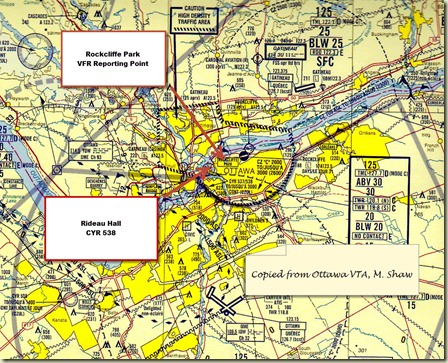Landings, or at least bad landings, seem to be making the aviation news lately. At Flight 8's recent Transport Canada Safety Seminar Claude Hurley & Oonagh Elliott pointed out that 53% of recent light aircraft accidents have been landing accidents and, of those, half were assessed as being due to lack of skill. Judgement only made up 25%, so lack of skill is twice the problem that judgement is at present.
On 30 September 2012 AVweb's Paul Bertorelli published a blog post entitled Johnny Can Read, But He Can't Land making some similar observations about the accident record in US Light-Sport Aircraft. He noted "The leading type of accident for most aircraft is what we call R-LOCs or runway loss of control. This broad category describes a multitude of aeronautical blunders—from crosswind-induced excursions, to drop-ins, to landing long or short or just running into stuff. (Runway lights, localizer bars and, yes, cows.)"
Why is it that lack of skill mostly shows up in landing accidents, rather than in other phases of flight? Bertorelli sums this up very succinctly "Of all the tasks in flying, landing requires the most refined motor skills and hand-eye coordination in reaction to a stream of subtle cues." In other words it is the hardest part of aircraft flight and a lack of skill will show up first and worst in landing accidents.
So why are pilots suddenly turning up with lack of skill accidents? Bertorelli focuses on lack of transition training to the lightweight and easy to over-control LSAs. I am sure that is a factor, but the TC statistics show this same trend in all types of privately-flown light aircraft.
Like everything in flying, landings take time to initially learn how to do them right, but then they require constant practice or else the skills get rusty and deteriorate. I believe this is the crux of the problem.
The recent 2012 COPA membership survey shows some disturbing trends when comparing data to the previous 2007 survey. One of the most worrying to me is the reported median number of hours flown annually, which in that five year period dropped from 40 to 27. This means that half the pilots flew less than 27 hours in 2011. On top of that almost half the pilots (46.6%) reported flying fewer hours in 2011 than previously, with only 15.7% reporting flying more.
The number of hours a pilot needs to fly annually to be sufficiently safe varies a lot and there are many factors involved. Higher total time pilots can get by with fewer hours, as they lean on their accumulated experience. Lower time pilots need more recent practice. The median reported total flying time in the COPA survey was 680 hours, which makes the vast majority of pilots surveyed quite "low time". Flying complex tasks, like helicopter vertical reference long-lining requires a lot of recent practice unless you want to wrap the line around a tree or ten. Fixed wing, day, VFR flying is less demanding.
I think that for low time pilots 27 hours a year is not enough to fly safely, even if they are only flying day, VFR and in light winds. That is barely two hours a month. If you fly that infrequently someone is going to get hurt and the accident statistics exactly bear that out.
There are lots of reasons why people don't fly more, but "too expensive" seems to be at the head of many people's lists. This is supported by the COPA survey again that shows an average member age of 57.2 years, meaning a large number of pilots are retired and living on pensions. They used to be able to afford to fly more and now they can't.
If the high cost of flying is keeping people from flying enough to be safe then something has to be done to reduce costs. Many pilots I listen to grumble about high fuel prices, but even today fixed costs, like maintenance, insurance and hangarage add up to more money than gas does for most aircraft. I think the problem here is that owners have to pay the fixed costs and then many of them pay for gas out of what is left over after that, which often doesn't leave much.
There are lots of ways to reduce the cost of flying. One of the easiest ways is to take on partners. Four partners will cut the fixed costs by 75% per person. It always amazes me how many people insist on owning their own plane, which they can barely afford and can't fly much, but always have excuses to not take on partners.
There are lots of other solutions to high costs as well. The new generation of electric aircraft, like the Yuneec International E430 can be flown for pennies an hour in fuel costs and have much lower engine maintenance costs as well. For many people if you aren't flying much and only locally renting makes more sense than owning.
Whatever the reason is keeping pilots from flying enough to be safe really doesn't matter. We have to look at our own circumstances and if we aren't flying enough to be safe then we can't just keep doing that until we have an accident. Instead we need to either find creative ways to fly more or admit we can't fly enough to fly safely and hang it up.





